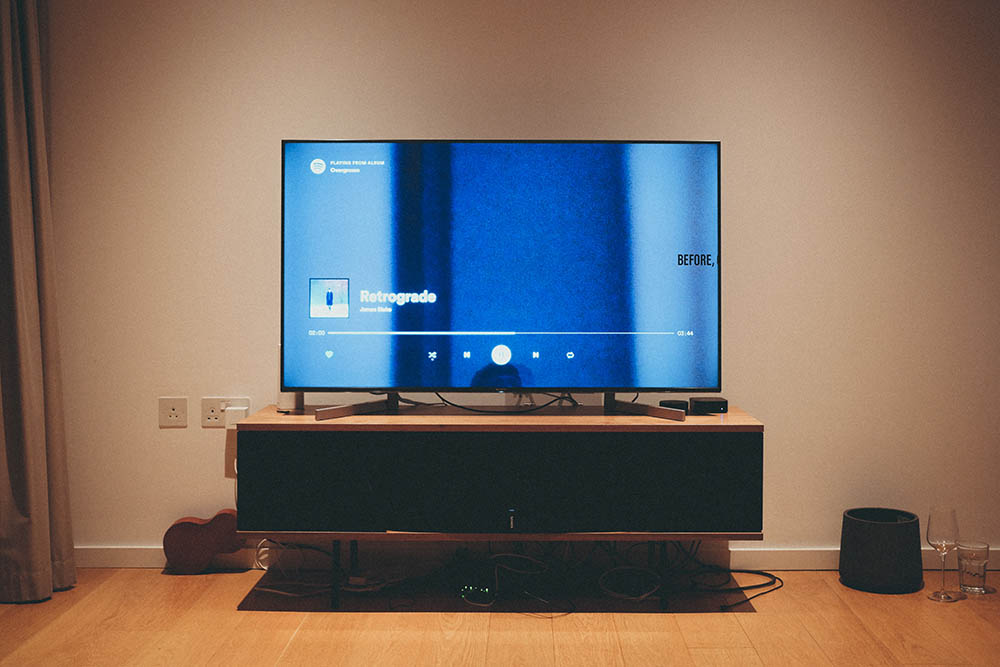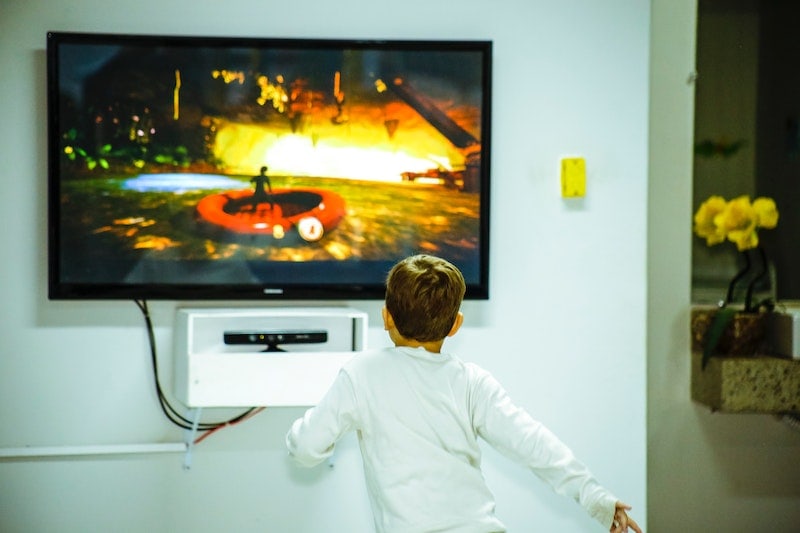How Many Watts Does a TV Use? Do They Consume Lots of Power?
-
Jeff Weishaupt
- Last updated:

Television is now an essential household appliance that everyone watches every day. But with rising energy concerns, many people wonder whether reducing their watching hours can help them save some money on their bills. The truth is that you won’t see a massive difference since TVs only consume 20–250 watts per hour.
A TV’s power depends on its model, type, size, and manufacturer. For instance, older, bulky CRTs (cathode-ray tubes) consume about double the electricity of the latest LED and LCD TVs. Similarly, a 24-inch LED may use about 30 watts an hour, while a 50-inch LED consumes around 60 watts an hour.
Of course, your TV’s total power consumption may differ from what we have listed, but you now have the idea. Let’s dig deeper and see the estimated watts that different types of TVs consume.
Wattage for Different Types of TVs
Over the years, televisions have evolved significantly. From the cathode-ray tube (CRT) and LCD to LED and OLED, we now have many choices when buying a TV set. There is also a huge variation in size and functionality.
While that’s a good thing, it has made it complicated to determine exactly how many watts a TV uses. So, to know how energy-efficient televisions are, we can look at how much power the common types and sizes of TVs consume.
Here is a quick breakdown:
| Energy Comparison (watts per hour) | 18-inch TV | 24-inch TV | 32-inch TV | 50-inch TV |
| LED | 18 – 22 W | 24 – 28 W | 30 – 50 W | 50 – 60 W |
| LCD | 25 – 32 W | 36 – 44 W | 50 – 70 W | 75 – 90 W |
| OLED | Unavailable | Unavailable | About 60 W | 70 – 80 W |
| CRT | 60 – 75 W | 75 – 95 W | About 120 W | Unavailable |
| Plasma | Unavailable | Unavailable | About 100-130 | 150 – 200 W |
Source: Renewablewise.com
Now you may have a clear idea of how things work with TV models and size and their energy consumption. When we go a little farther, we see a 50-inch plasma TV consuming 150–200 watts, which is way higher than LEDs or LCDs of the same size. This shows that the manufacturers have recently done a remarkable job in energy efficiency.
How to Find Your TV Set’s Wattage

The US government has obliged every manufacturer to sell appliances with EnergyGuide labels since 2011. The sole purpose was to enlighten buyers or consumers about the operating costs of the model they are buying.
You can find the wattage on your TV’s back panel, where the brand, model number, and power ratings are mentioned. But if your television doesn’t have it, locate its maximum amperage (Amps Max) and voltage.
Once you find them, do little math to calculate your TV set’s wattage. For example, suppose your TV’s amperage (I) is 20 and voltage (V) is 55. Then, simply multiply both together to calculate the wattage.
- P = VI
- P = 20 x 55
- P = 1,100 W
How to Determine Your TV’s Daily Power Consumption?
Your TV’s daily or monthly wattage is mentioned on your energy bill in kilowatt-hours (kWhs). But if you want to calculate it on your own, you can multiply the TV’s wattage by the amount of time you use the device on average (daily).
For example, you have an LCD TV with a wattage of 50. You watch it for 5 hours on average daily. Now, multiply both to have your daily watt-hours.
- P = 50 x 5
- P = 250 watt-hours
- P = 0.25 kilowatt-hours (kWhs)
Does a TV Consume More Power Than Other Household Appliances?

No, TVs don’t consume as much energy as you think. The newer television models use far less power than your other household appliances, such as air conditioners and refrigerators. So, if energy efficiency is your concern, you must focus on reducing the use of these appliances.
The statistics show that an average American household consumes about 900 kWh of energy a month. This means the TV only makes up for 1.33% of your total monthly power consumption. That’s almost negligible, isn’t it?
Here is the estimated power consumption of some household devices:
| Appliances | Power Consumption (kWhs) |
| Air Conditioner (AC) | 1,000 – 2,500 W |
| Air Fryer | 1,400 – 2,300 W |
| Dishwasher | 1,600 – 2,400 W |
| Electric Kettle | 1,200 – 1,600 W |
| Microwave Oven | 2,500 – 4,100 W |
How to Estimate the Annual Running Cost of a TV
Now that you know how to calculate the daily kilowatt-hours, you can easily estimate the annual cost of running your TV. First, multiply your daily TV usage (total hours spent watching TV) by the wattage, and then multiply it by the average electricity cost in your state or area.
According to Eco Cost Savings, the average running cost of a TV for American households is about $16.04 annually. This means it costs roughly $1.33 a month.
One crucial factor that many homeowners overlook is the “standby mode” on smart TVs. We often put the appliance on standby or sleep mode instead of turning it off, assuming it won’t consume any energy.
However, that’s not the truth. Even on standby mode, your smart TV uses about 5% or less of the wattage it consumes when turned on. So, consider this when calculating the annual running cost of your TV.
How to Reduce Your TV’s Power Consumption

TV doesn’t consume lots of power, but if you still want to decrease its power consumption, you can follow a few tips to be successful. Although it won’t make a remarkable difference on your energy bill, it is still good to save a few dollars.
Here are some ways you can reduce your TV’s power consumption:
- It goes without saying that you should dwindle down your watching hours. There is no need to rewatch your favorite TV shows for the hundredth time. Instead, find another hobby, go for a walk, work out, or read a book.
- Setting up a fantastic home cinema with a DVD player, music system, and lighting could burden your energy bills. Of course, you shouldn’t get rid of all these devices, but turn them off when they are not in use. You can buy an on-off switch to turn all of them at once.
- Make sure to turn your TV off before sleeping at night. If not, you can plug it into a smart power strip to save a little electricity.
- When finding an energy-efficient TV, you may come across many brands and models. However, the most reliable is Energy Star, a governmental organization encouraging energy efficiency. Replace your TV with an Energy Star model to start saving money.
Conclusion
If you’re new to energy-efficient devices, you can start by decreasing the power consumption of your typical household appliances, such as TVs. Fortunately, modern TV sets don’t consume lots of power. Instead, they merely use about 20 -250 watts an hour, depending on the type, manufacturer, size, and model.
TVs also don’t contribute much to your energy bills. Even if you watch it 5 hours daily on average, it will barely make 1.5% of your monthly power consumption. Nevertheless, buying an energy-efficient TV set can save you a few bucks annually.
See also:
Featured Image Credit: Samuel Regan-Asante, Unsplash
Contents
